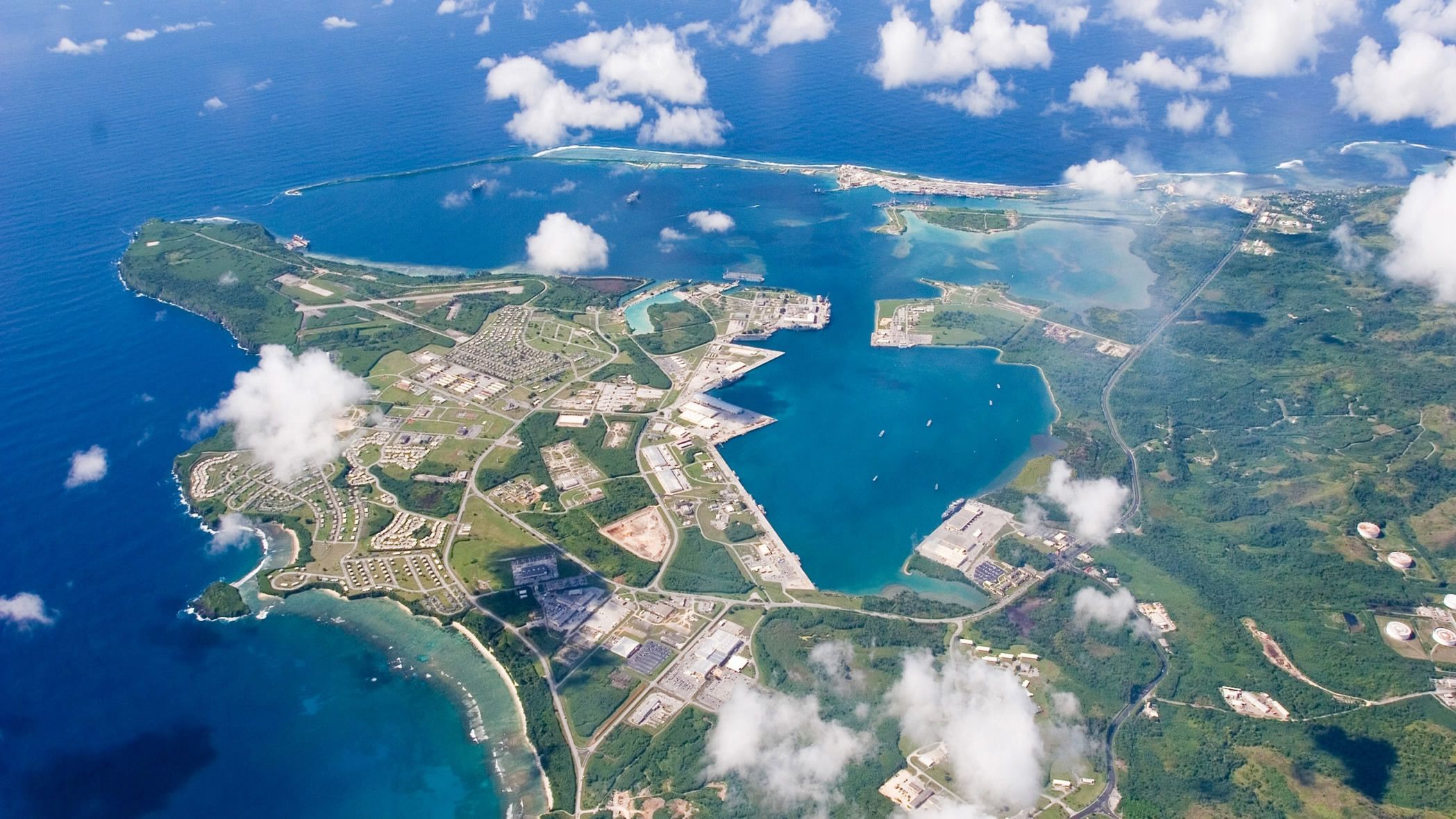Amid escalating rhetoric between the US President Donald Trump and Democratic People's Republic of Korea (DPRK)'s leader Kim Jong Un, DPRK threatened to fire ballistic missiles toward Guam, a small Pacific island that hosts a significant military contingent.
War of words
The war of words kicked off on August 5 as the UN adopted tougher new sanctions against the DPRK proposed by the US. Two days later, Pyongyang blasted the UN's sanctions saying it would make the US pay "a thousand-fold for all the heinous crimes" committed against the DPRK.
In response, Trump on Tuesday vowed to hit the DPRK with "fire and fury" if the latter continued threatening the US.
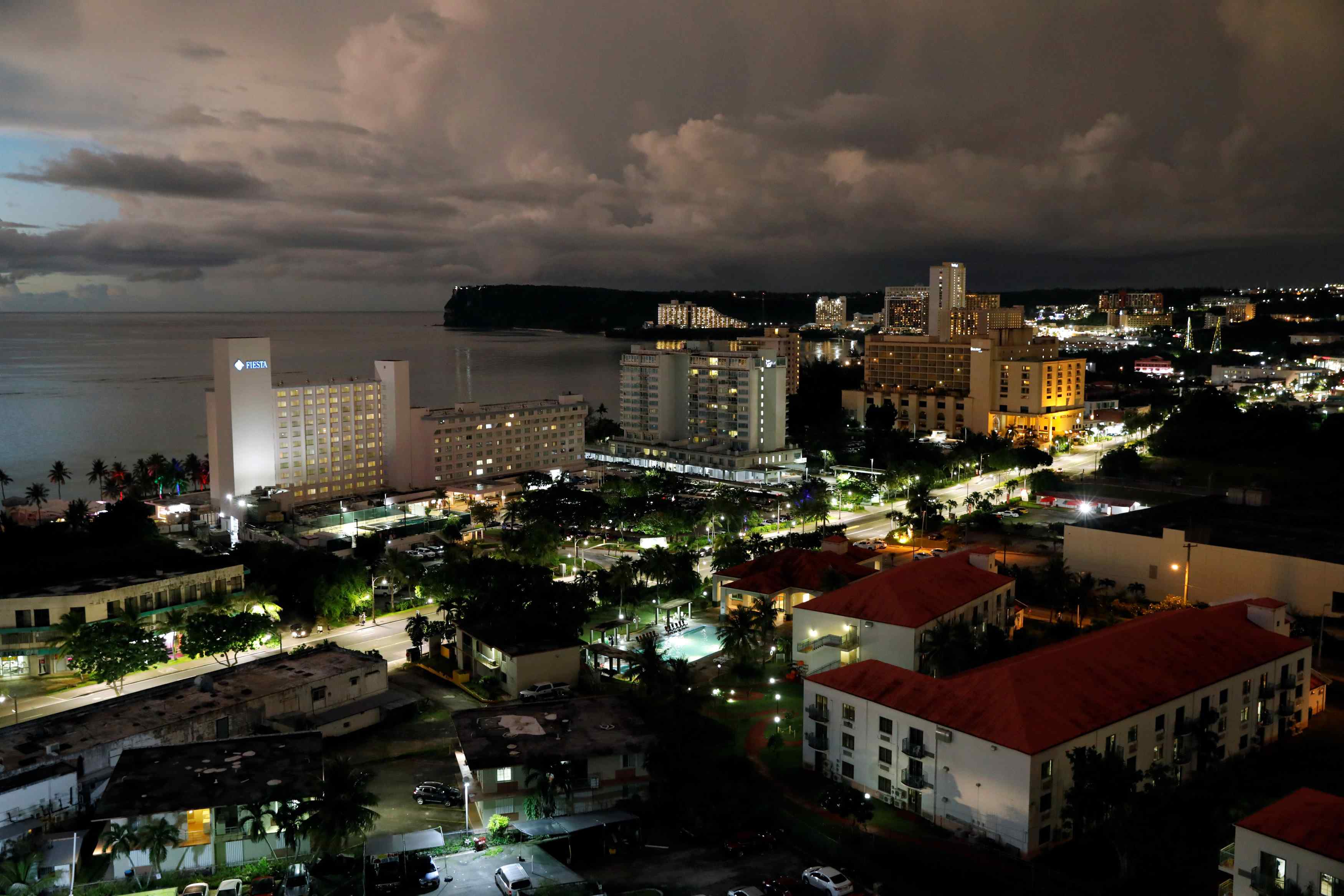
A view of Tumon tourist district at dusk on the island of Guam, a US Pacific Territory, August 13, 2017. /Reuters Photo
A view of Tumon tourist district at dusk on the island of Guam, a US Pacific Territory, August 13, 2017. /Reuters Photo
However, DPRK's threatening did not stop as Trump expected. The DPRK Thursday warned the US of a preemptive strike over Japan and into waters off Guam through four intermediate range ballistic missiles.
Trump immediately announced on the same day that the DPRK should be "very very nervous" of the consequence if it even thinks of attacking US soil and claimed that the US military was "locked and loaded."
Guam, home to 163,000 residents has found itself suddenly in DPRK's firing line.
Why Guam?
DPRK state media have warned of strikes against the US before but those threatening messages were usually vague with no specific targets.
Guam, the tiny island that Kim is eyeing has been a US territory since 1898 with a strategic airfield and naval station. The US has deployed 7,000 troops in Guam.
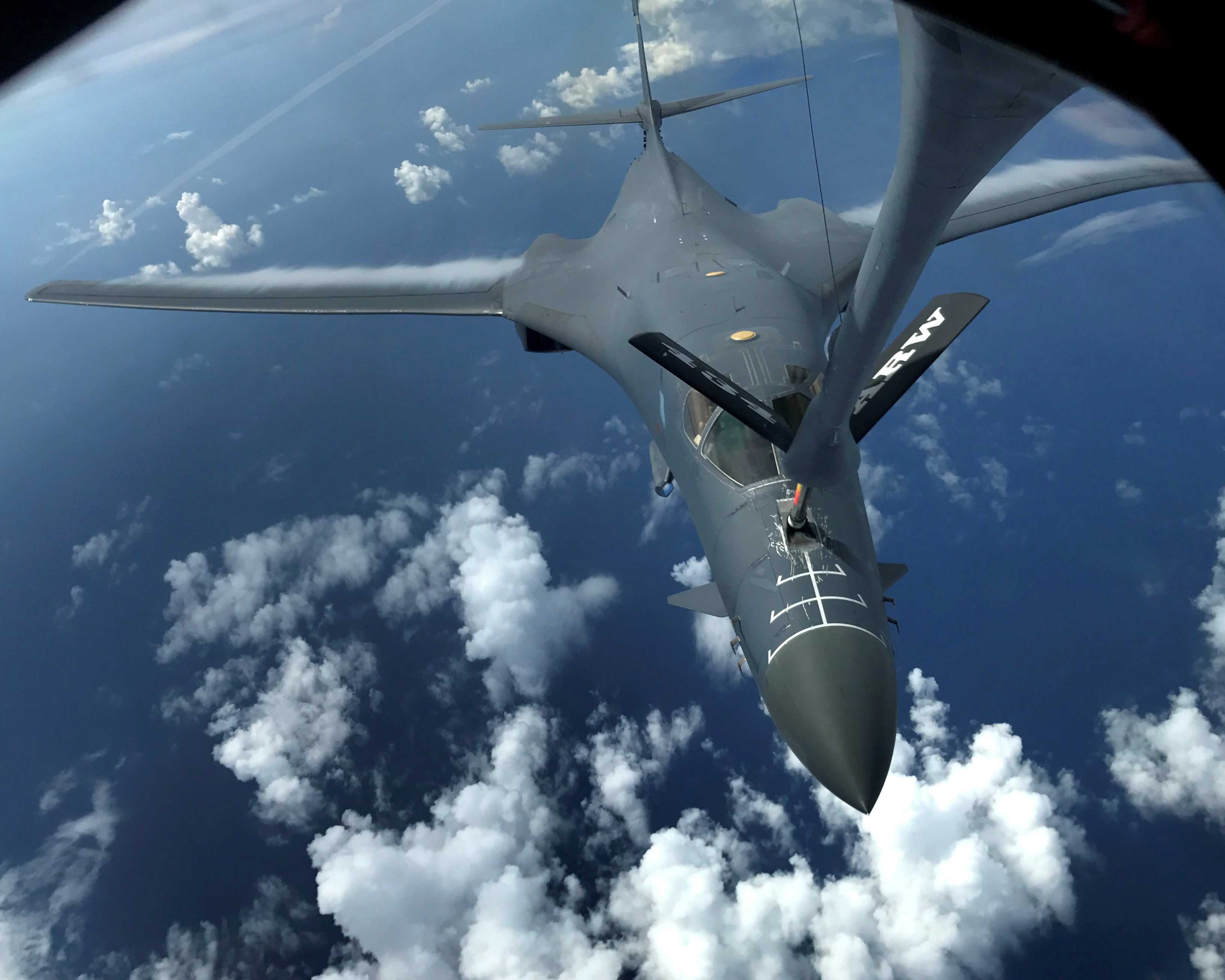
One of two US Air Force B-1B Lancer bombers is refueled during a 10-hour mission flying to the vicinity of Kyushu, Japan, the East China Sea, and the Korean Peninsula, over the Pacific Ocean August 8, 2017. /Reuters Photo
One of two US Air Force B-1B Lancer bombers is refueled during a 10-hour mission flying to the vicinity of Kyushu, Japan, the East China Sea, and the Korean Peninsula, over the Pacific Ocean August 8, 2017. /Reuters Photo
Analysis indicated that on the one hand, Guam is the closest US territory to the DPRK. According to Reuters, the mid-range ballistic missile in the DPRK can reach Guam in fourteen minutes.
On the other hand, as part of Marianas island group, Guam has been used as a launching point for long-range bombs in Asia.
After the DPRK launched its second intercontinental ballistic missile (ICBM) on July 28, the US responded by firing two B-1B bombers over the Korean Peninsula from Guam.
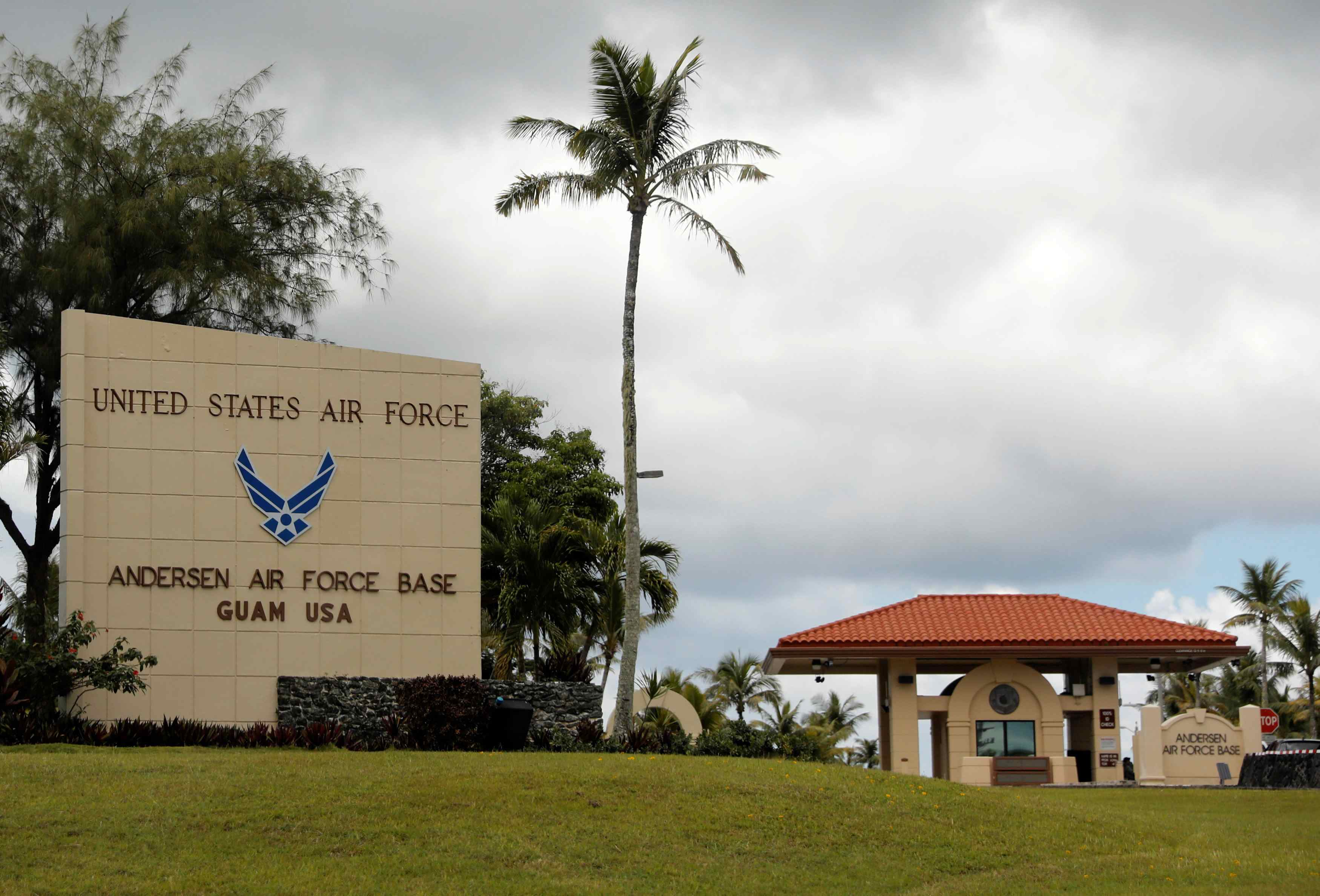
A view of the entrance of US military Andersen Air Force base on the island of Guam, a US Pacific Territory, August 11, 2017. /Reuters Photo
A view of the entrance of US military Andersen Air Force base on the island of Guam, a US Pacific Territory, August 11, 2017. /Reuters Photo
Above all, the US Army's Terminal High Altitude Area Defense (THAAD) system has been deployed to the island since 2013, which means the military base can shoot down any potential ballistic missiles.
In the face of fear?
How do the people who live in Guam feel amid a nuclear threat?
The governor of Guam, Eddie Baza Calvo Wednesday told his people not to worry.
“I'm working with Homeland Security, the rear admiral and the US to ensure our safety, and I want to reassure the people of Guam that currently there is no threat to our island or the Marianas,” he said.
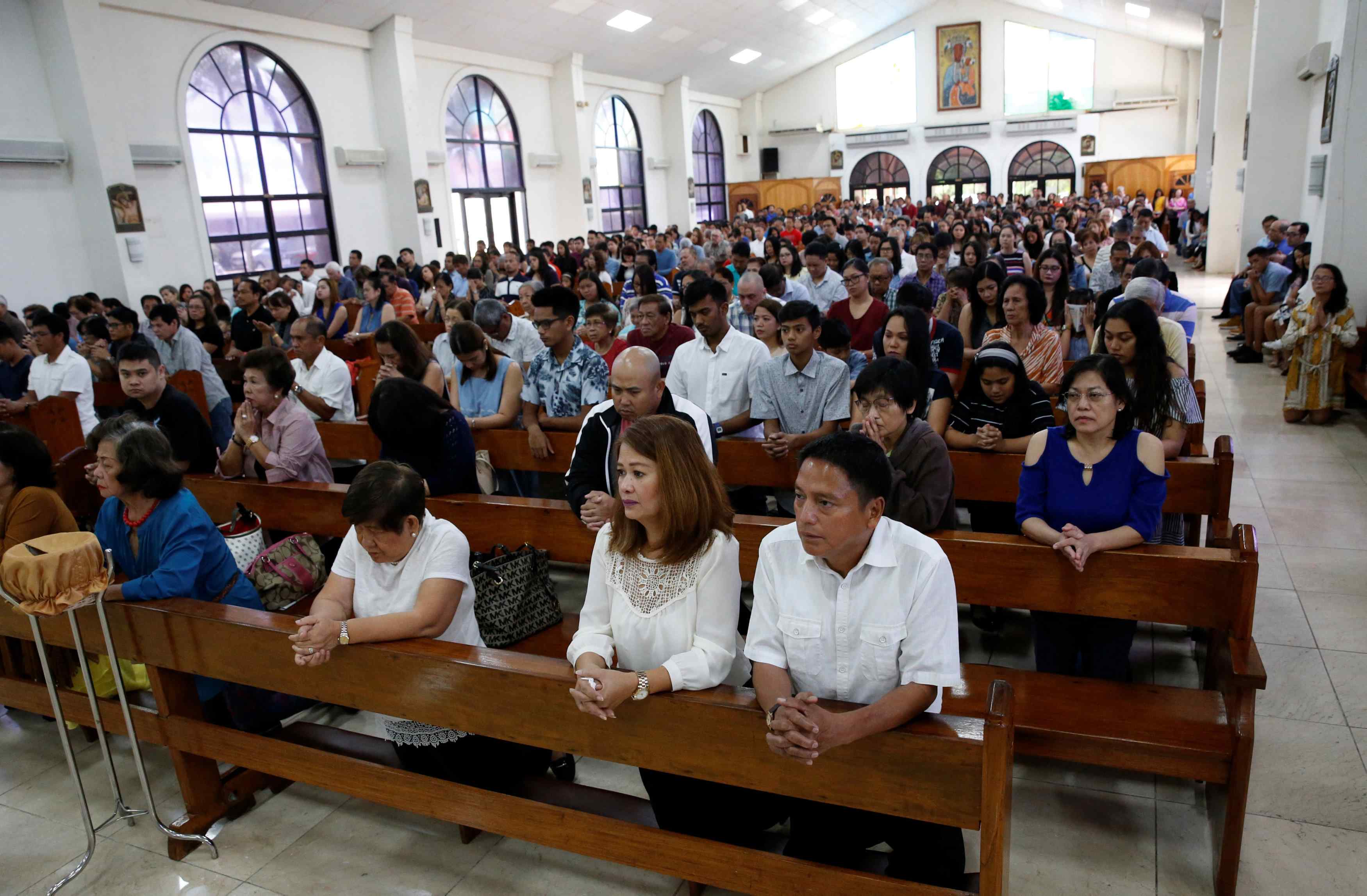
Local residents pray during a Sunday mass at Sta Barbara Church on the island of Guam, a US Pacific Territory, August 13, 2017. /Reuters Photo
Local residents pray during a Sunday mass at Sta Barbara Church on the island of Guam, a US Pacific Territory, August 13, 2017. /Reuters Photo
Guam is still an unincorporated territory, meaning its citizens can't vote but Trump called the governor on Saturday expressing his support to this US territory. Trump even said that the threat of a nuclear attack would only boom Guam's tourism as the island became famous.
According to AFP, some residents said they fear a typhoon more than Kim's threat.
"To be honest, I’m more worried about the projectiles from the typhoons when we get strong winds than whatever projectiles Kim Jong Un says he will launch on Guam," Janice Furukawa, a 58-year-old mother told reporters.
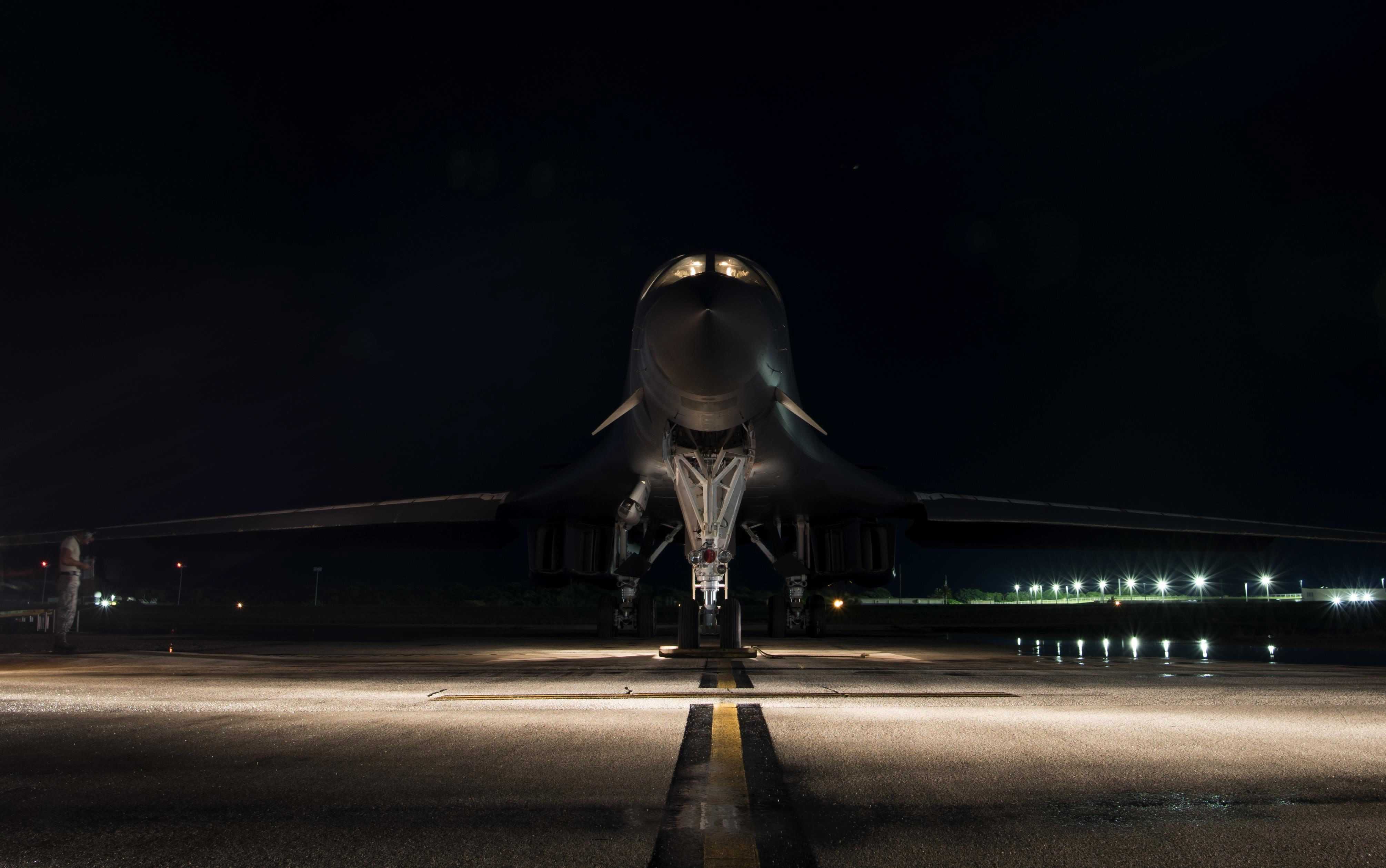
US Air Force B-1B prepares to take off for a 10-hour mission from Andersen Air Force Base, Guam, into Japanese airspace and over the Korean Peninsula, July 30, 2017. /AFP Photo
US Air Force B-1B prepares to take off for a 10-hour mission from Andersen Air Force Base, Guam, into Japanese airspace and over the Korean Peninsula, July 30, 2017. /AFP Photo
However not all the residents can keep such calm.
Cecil Chugrad said to AP that he is a little worried and panicked as nobody knows what is really going to happen.
"If it's just me, I don’t mind, but I have to worry about my son. I feel like moving (out of Guam) now," added Chugard.
The local newspaper also interviewed some kids who said they are "freaked out."
Also on Friday, Guam's safety officials began distributing a two-page guideline with advice on "preparing for an imminent missile threat," which make the uncertain fear more concrete.
“In time,” the advisory said, “you will be able to leave a fallout shelter.”

